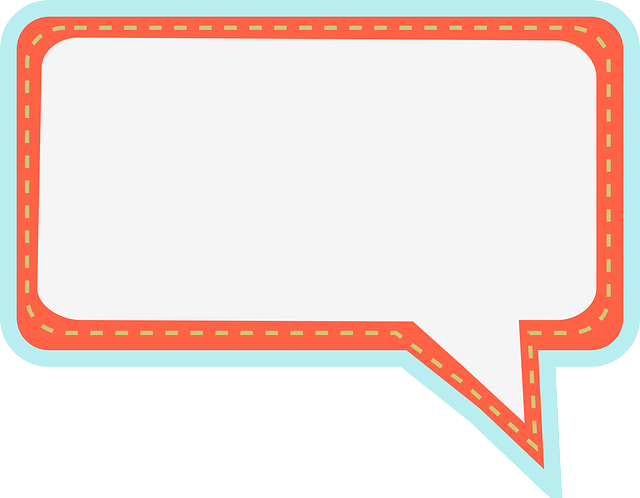Are your email campaigns falling flat, like a deflated balloon? Don’t worry, we’ve got the solution to pump them up and skyrocket your conversion rates!
In this article, we’ll share with you 10 essential tips for email conversion optimization that will turn your lackluster campaigns into vibrant success stories.
Think of your email campaigns as a high-speed train, racing towards a destination filled with engaged customers and increased sales. To ensure your journey is smooth and productive, you need to understand your target audience, craft compelling subject lines that grab attention like a magnet, and personalize your emails to make your recipients feel like VIPs.
But that’s not all! You’ll also learn how to create clear call-to-actions that guide your readers towards the desired action, optimize your email design to make it visually appealing and easy to navigate, and test and analyze your campaigns to fine-tune your strategies.
So, hop on board and get ready to transform your email campaigns from mediocre to magnificent with these 10 essential tips for email conversion optimization!
Key Takeaways
- Understanding the target audience through customer segmentation and buyer personas is essential for email conversion optimization.
- Crafting compelling subject lines and A/B testing them can help grab attention and improve email conversion rates.
- Personalizing emails through segmentation, dynamic content, and personalized subject lines can significantly impact conversion rates.
- Clear and compelling call-to-actions, placed above the fold and using action-oriented language and contrasting colors, are key to improving email conversion rates.
Understand Your Target Audience
Understanding your target audience is like putting on a pair of glasses that allow you to see their needs, desires, and preferences with crystal clarity. By implementing customer segmentation and creating buyer personas, you can gain valuable insights into who your audience is and what they want.
Customer segmentation involves dividing your audience into specific groups based on characteristics such as demographics, behaviors, and preferences. This allows you to tailor your emails to each segment, increasing the chances of conversion.
Additionally, creating buyer personas provides a deeper understanding of your ideal customers by depicting their goals, challenges, and motivations. Armed with this knowledge, you can create personalized and relevant email content that resonates with your audience and compels them to take action.
Craft compelling subject lines to capture their attention and entice them to open your emails, which we will discuss in the subsequent section.
Craft Compelling Subject Lines
Master the art of crafting subject lines that immediately grab the reader’s attention and entice them to open your emails.
Engaging content is crucial in capturing your audience’s interest. Your subject line should be concise yet persuasive, giving a preview of the valuable information or offer that awaits them.
A compelling subject line can make the difference between your email being opened or ignored. A/B testing can help you determine which subject lines are most effective by comparing different versions with a small sample of your audience. Analyze the results and refine your approach to consistently deliver subject lines that resonate.
Once you’ve mastered this skill, you can move on to the next step: personalizing your emails to further enhance your conversion rates.
Personalize Your Emails
Transform your emails into personalized experiences that speak directly to your recipients, like a tailored suit that fits perfectly. By implementing segmentation strategies and using dynamic content, you can ensure that your emails resonate with each individual on your list.
Here are three ways to personalize your emails and increase conversion rates:
-
Segment your email list based on demographics, preferences, or behavior to send targeted messages that are relevant to each recipient.
-
Use dynamic content to customize the email content based on the recipient’s past interactions, such as including their name, previous purchases, or browsing history.
-
Personalize the email subject line and opening paragraph to grab the reader’s attention and make them feel valued.
By personalizing your emails, you can create a stronger connection with your audience and improve your chances of converting them into customers.
Now, let’s move on to the next section about creating clear call-to-actions.
Create Clear Call-to-Actions
To captivate your recipients and drive action, crafting clear and compelling call-to-actions is key to achieving your email marketing goals. Your call-to-actions should be concise and persuasive, guiding your recipients on what action to take next.
Use action-oriented language, such as ‘Shop Now,’ ‘Download Now,’ or ‘Learn More,’ to encourage immediate engagement. Make sure your call-to-action stands out by using contrasting colors and larger font sizes.
Additionally, consider placing your call-to-action above the fold to increase visibility. By optimizing your call-to-actions, you can improve email deliverability and increase open rates.
Next, we will discuss how to optimize your email design to further enhance your conversion rates.
Optimize Your Email Design
Maximize engagement and boost conversion rates by optimizing the design of your emails, effortlessly captivating recipients with visually stunning layouts and strategic placement of content.
To improve readability, use a clean and organized design that guides the reader’s eye smoothly through the email. Make sure your fonts are legible and choose colors that enhance readability.
Additionally, optimize your emails for mobile devices, as more and more people are accessing their emails on smartphones and tablets. Use responsive design techniques to ensure your emails look great on any screen size. Test your emails on different devices and platforms to ensure they’re mobile-friendly.
By optimizing your email design, you can create a visually appealing and user-friendly experience that encourages recipients to take action.
Transitioning into the next section, it’s crucial to test and analyze your campaigns to further optimize your email conversion rates.
Test and Analyze Your Campaigns
Now that you’ve optimized your email design, it’s time to take your email conversion to the next level. A/B testing is a powerful tool that allows you to compare different versions of your emails and see which one performs better. By testing different subject lines, layouts, or calls-to-action, you can identify what resonates with your subscribers and drives higher engagement.
Additionally, email segmentation is essential for delivering targeted and personalized content. By dividing your subscriber list based on demographics, interests, or behaviors, you can send more relevant emails that are more likely to convert.
So don’t leave your email conversion to chance – test, analyze, and segment to optimize your campaigns and boost your results.
Frequently Asked Questions
How can I prevent my emails from being marked as spam?
To prevent your emails from being marked as spam, you need to implement effective email deliverability strategies.
Firstly, ensure that you have permission to email your recipients by using double opt-in methods.
Secondly, regularly clean your email list to remove inactive or invalid addresses.
Additionally, personalize your emails and avoid using spam trigger words.
Finally, monitor your email deliverability rates and make necessary adjustments to improve your sender reputation.
By following these strategies, you can increase the chances of your emails reaching the inbox instead of the spam folder.
What is the ideal length for an email subject line?
The ideal length for an email subject line is around 6 to 10 words. Keeping it short and concise is crucial to grab the reader’s attention and entice them to open the email.
Longer subject lines tend to get cut off, which may result in important information being missed. By using a shorter subject line, you can make it easier for recipients to quickly understand the purpose of the email and increase the chances of it being opened and read.
Is it necessary to use the recipient’s name in the email body?
Using the recipient’s name in the email body is crucial for personalization benefits and improving email conversion rates. By addressing the recipient directly, you create a sense of familiarity and connection, increasing the chances of their engagement.
However, it’s not just about using their name. Effective email segmentation is equally important. By dividing your email list into smaller, targeted groups, you can tailor your content to match their interests and needs, resulting in higher open and click-through rates.
How can I ensure my call-to-action buttons stand out in the email?
To improve visibility and increase click-through rates, make sure your call-to-action buttons stand out in your emails. Use contrasting colors that catch the reader’s attention and make the button easy to find.
Make the button text clear and concise, using action-oriented language that encourages the reader to take the desired action.
Additionally, ensure that the button is large enough to easily click on, even on mobile devices. These strategies will help drive more conversions from your email campaigns.
What metrics should I analyze to measure the success of my email campaigns?
To measure the success of your email campaigns, you should analyze two key metrics:
-
Email open rate: This metric shows how many recipients actually opened your emails, indicating the effectiveness of your subject lines and sender name.
-
Email campaign tracking: This allows you to track clicks, conversions, and overall campaign performance.
By analyzing these metrics, you can identify areas for improvement and optimize your email campaigns to drive better results.
Conclusion
So there you have it – 10 essential tips for email conversion optimization. By understanding your target audience, crafting compelling subject lines, and personalizing your emails, you can greatly increase your chances of success.
Additionally, creating clear call-to-actions and optimizing your email design are important factors in improving your email marketing results.
However, you may be thinking, "But what about the time and effort it takes to implement these strategies?" Well, the truth is, investing in email conversion optimization is a long-term strategy that will ultimately save you time and effort in the future.
So, don’t delay! Start implementing these tips today and watch your conversions soar!









